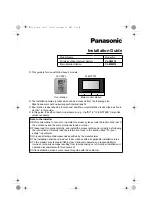
APCI-/CPCI-1500 Technical
description Chapter 9
60
Task:
Windows 32-bit information
For Windows NT and Windows 2000/9x, 4 running rings (ring 0
to ring 3) are available.
- The user application operates in ring 3. This ring gives no access to hardware.
- VXD and SYS driver operate in ring 0 and give access to hardware.
- Ring 0 has no direct access to global variable from ring 3. It has to use a shared
memory.
- Ring 0 and ring 3 have a pointer that points on this shared memory. These 2
pointers are not configured under the same address.
This function must be called up for each
xPCI-1500
on which an interrupt is to
be enabled. It installs one user interrupt function in all boards on which an
interrupt is to be enabled.
First calling (first board):
- the user interrupt routine is installed
- interrupts are enabled
- user shared memory is allocated if APCI1500_SYNCHROUNOUS_MODE
ahs been selected.
If you operate several boards
xPCI-1500
which have to react to interrupts, call up the
function as often as you operate boards
xPCI-1500
.
The variable
v_FunctionName
is only relevant
for the first calling
.
From the second call of the function (next board):
- interrupts are allowed.
Interrupt
The user interrupt routine is called up by the system when an interrupt is
generated.
An interrupt is generated when:
- the counter/timer has run down
- an event is generated
- the watchdog has run down
The following errors are possible
- overtemperature
- short-circuit
- no voltage is available
If several boards are operated and if they have to react to interrupts, the variable
b_BoardHandle
returns the identification number (handle) of the board which
has generated the interrupt.
















































